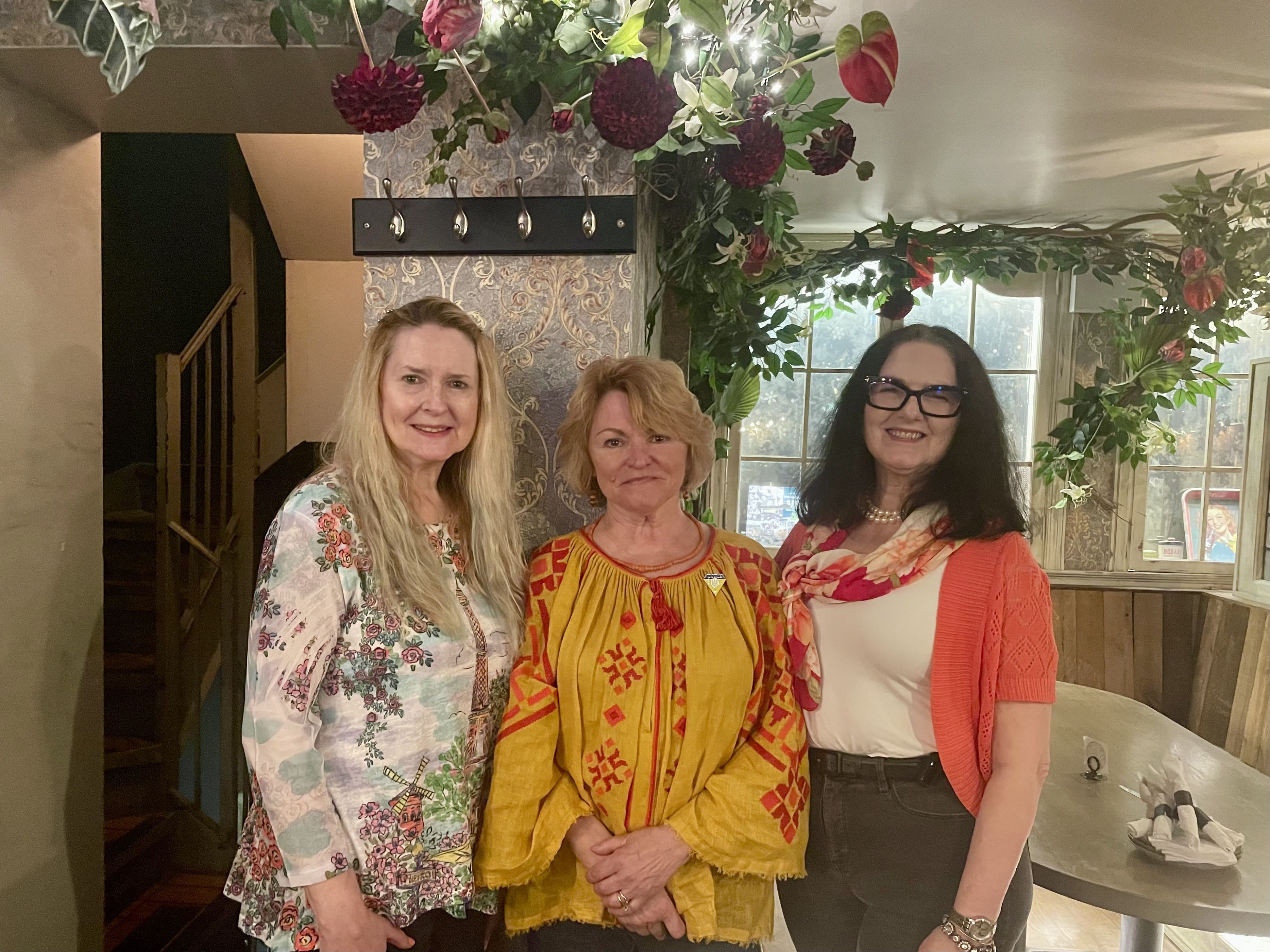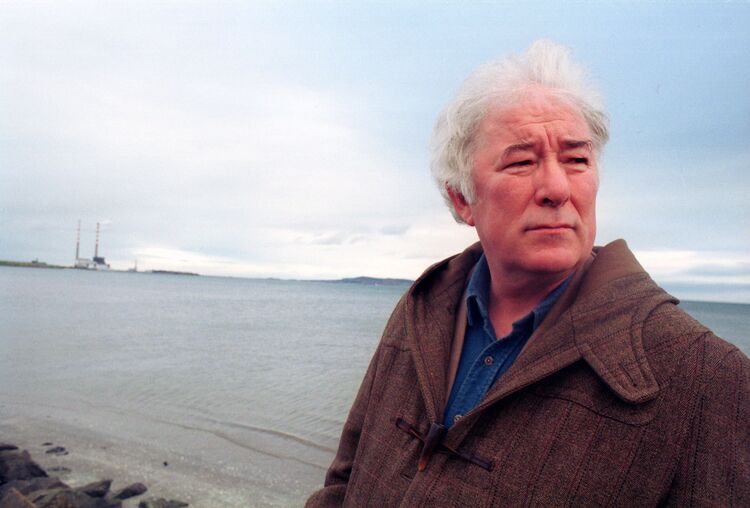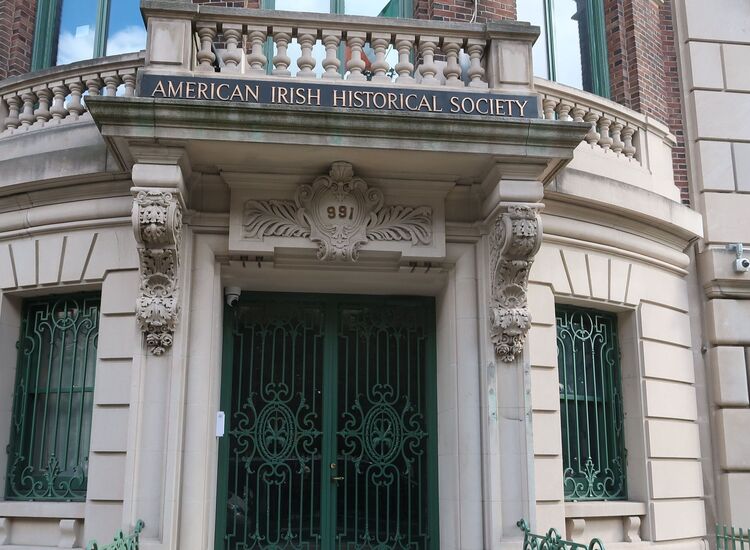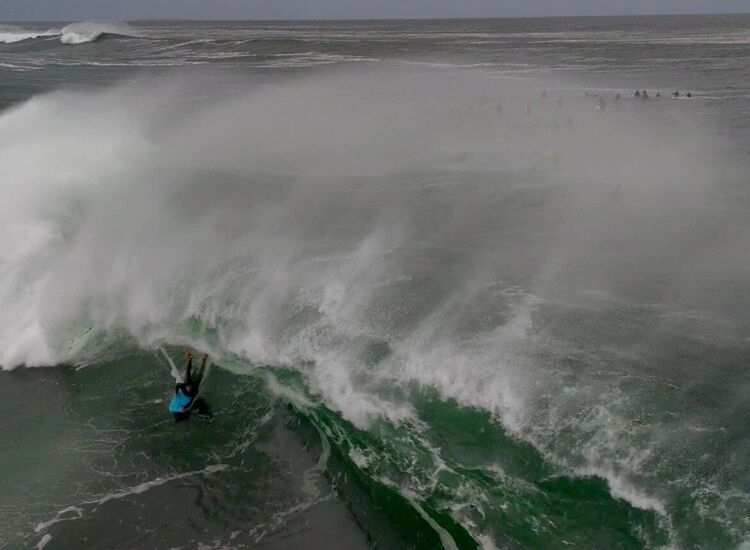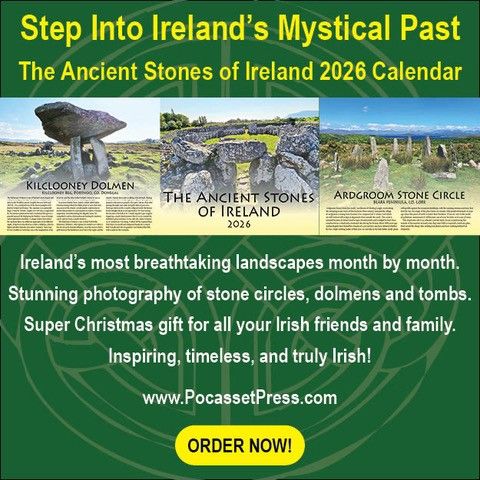Co-hosted by Nollaig na mBan team members Mary McIntyre and Dee Nolan, our Bealtaine celebration at the Westbury Pub on West 38th last week was an event not to be missed. The fáilte from staff was gracious and the food was delicious. We chose the venue because it features traditional Irish music on Sunday afternoons with fiddler Bernadette Fee and singer/guitarist, Seán Moloney. To welcome the Irish summer, several guests wore bright colors and came prepared to share what the Bealtaine festival means to them. The word Bealtaine means bright fire and Mary McIntyre reminded the gathering that the hill of Uisneach in County Westmeath is where a fire is lit every year on the eve of Bealtaine. This is a tradition dating back thousands of years to mark the beginning of the Irish summer in May. In ancient Ireland, the hill was the seat of the high king where Ireland’s namesake, the goddess Éiru is said to be buried. It was also a focal point for political rallies during Ireland’s fight for independence. One of the traditions associated with this fire festival is washing one's face in the May morning dew. This practice was said to keep you always looking young and beautiful so it would be easy to find a mate. In ancient Ireland it was said that if two lovers experienced “the god and goddess act” by sundown on Bealtaine, they had the opportunity to marry six weeks later on Midsummer’s Day. Some say that’s the origin of the “June wedding” valued today. Love and romance was always a May topic. Mayo native Mary McIntyre shared a childhood memory about a rhyme called “Gathering Nuts in May,” a singing game with the aim of pairing a boy and girl from within two teams of participants.
The guests loved actress Bridget Dundon’s presentation of Shakespeare’s Sonnet 98 where the poet is looking forward to summer with its sights and sounds. Bridget followed with Sonnet 18 with its famous line, “Shall I compare thee to a summer’s day.” A reminder that the actual summer with its pros and cons is compared to the eternal summer of the person which will live on through the poem.
An example of someone living on because of words written by a loved one, Kathleen Fraiser’s paternal grandmother, Mary Josephine O'Connell Frazier, is one who lives on in her granddaughter’s writing. Kathleen shared a passage from “Selkie Girl,” her historical fiction/magical realism work, which was inspired by her grandmother.
Continuing with the love theme, poet and photographer Margaret McCarthy began her presentation by giving a sneak peak of her latest book, “Beloved,” from Broadstone Books. Her ethereal black & white photographs of ancient landscapes are accompanied by 5-line tanka works by Irish poet Gabriel Rosenstock, written in both Irish and English. The theme: our search for the beloved across place and time. Who and what do we truly love and value? Margaret tells us the book is available for pre-sale (with a 20% discount) at www.broadstonebooks.com. She then read one of her poems, “The Tangible Illumination of Summer,” from her first poetry collection.
Introducing the work of Irish poet Róisin Leggett Bohan at our Bealtaine celebration, Shelley Anne Quilty gave an excellent reading of a lovely poem, “We Carried May.” The poem, is in praise of Ariel, resident cat of Tyrone Guthrie Centre.
“ You taught me to pause, listen, to bustling shafts of long grass, the bending backs of rushes, sift of branches murmuring above us reminded me that chaos becomes too tricksy at times.”
To me, this poem a reminder to take a break from the current noise around us and enjoy nature. This brought us to one of the most cherished traditions of the festival - giving and receiving flowers. When I was a child, May 1st was a day for making daisy chains. We made chains to hang around our necks, to hang around our mother’s neck, a best friend’s neck and sometimes, the cow’s or the donkey's neck. In olden days, families scattered flowers on their doorsteps to ward off fairies. Farmers placed daisies and other flowers on the doorstep of the cattle barn to bring blessings to the livestock.
The stepdance known as “The Garden of Daisies” came to life at our Bealtaine celebration when the talented Bernadette Fee performed the dance while at the same time accompanying herself on the fiddle without missing a beat. Everyone agreed that while lots of people can dance, few can play music to accompany themselves while they’re at it. Bernadette’s brother, Ed Fee, an actor, and film producer, joined his sister to dance a reel while their Mom, the lovely Mary Fee treated everyone to her delicious baking.
Dublin native Dee Nolan took a break from her co-host role to explain the meaning behind various color roses. While pink is an expression of joy and appreciation, red is a symbol of love and passion. Dee explained that If you gift someone with a white rose, you’re wishing them well on their fresh start and if the recipient is full of energy and enthusiasm, an orange rose is appropriate. On the other hand if you’re expressing gratitude, you should look for a peach colored rose. Dee also spoke about famous Roses including the Rose of Tralee and Rose O’Neill.
Poet, Bernadette Cullen added her flowers to the mix with her very new poem, Summertime: “A cluster of peonies in a blue glass vase on a red table opens a window to touch sunlight.”
Indeed, guests were touched by the warmth of the sun and the fire of Bealtaine as they passed around a basket decorated by Mary Fee for the occasion. Our Nollaig na mBan charity is the UNWLA – Ukrainean National Women’s League of America region-nyc@unwla.org. Team members presented the generous donation to Regional President Oksana Zukoff who along with members Orysia Streak, and Roksolana Karmazy attended our celebration. After lunch it was time to enjoy more music with Bernadette Fee and Seán Moloney. People said it was difficult to leave.
Maura Mulligan is author of the memoir, “Call of the Lark.”

